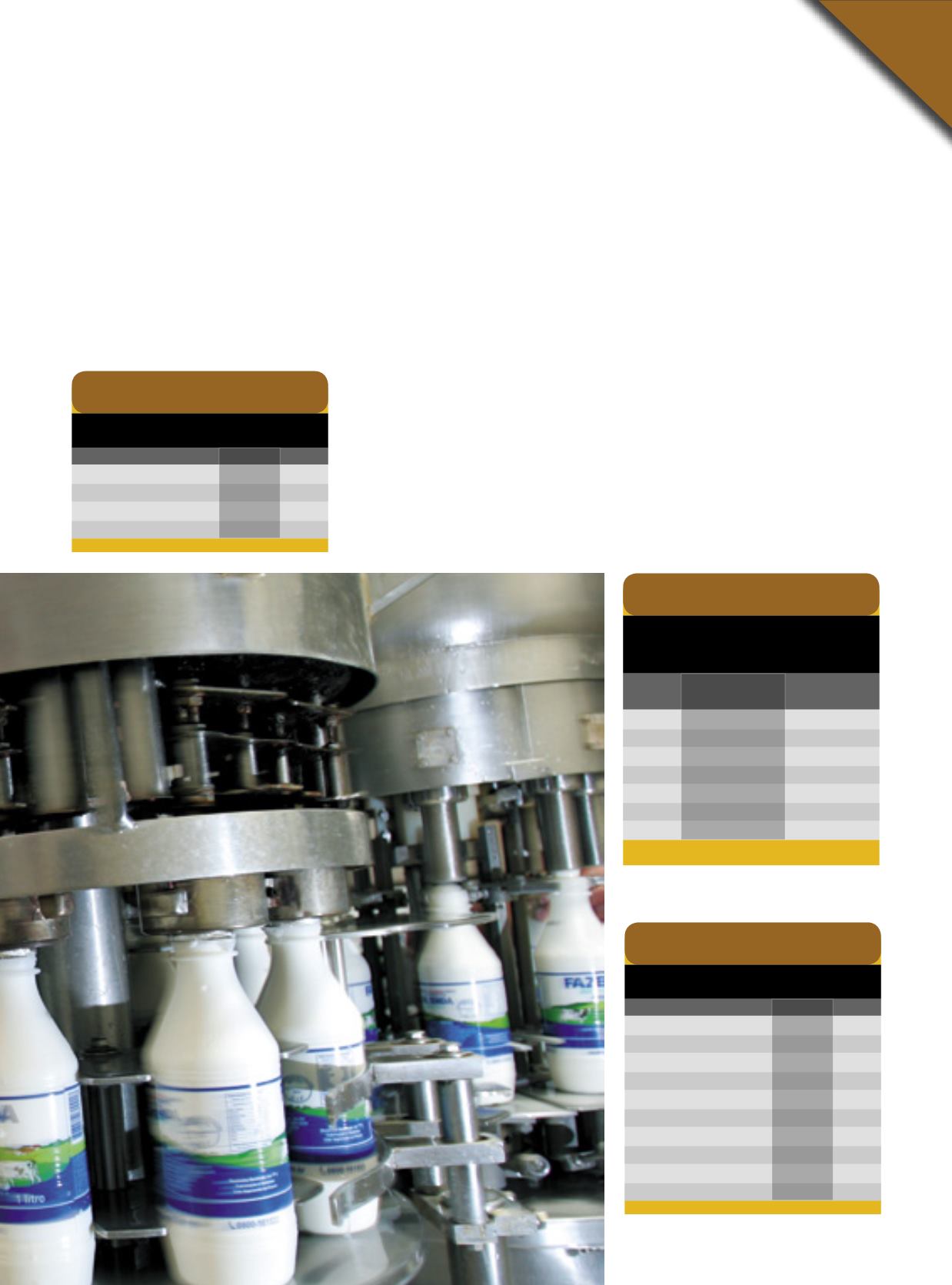
doctor Fábio Mezzadri, analyst at the Rural
Economy Department (Deral), of the Paraná
State Secretariat of Agriculture and Supply
(Seab). “Many farmers reduced their herds,
slowed down their production as a cost sav-
ingstrategy,whilesomeofthemswitchedto
other activities”, he adds.
“The smaller supply of production vol-
umes under inspection for two years in a
row should offer some support to farmgate
prices in2017, encouraging increases inpro-
duction, even in light of rising imports”, an-
alyzes Maria Helena Fagundes, fromConab,
in July. She mentioned the 0.6 percent evo-
lution in average nominal prices from Jan-
uary to July 2017 and the 0.1 percent rise
in production under inspection in the first
quarter of the year. Embrapa analysts (Inte-
lactus Team) also detected more promising
prices and production costs intended to re-
cover the production levels, in spite of the
fact that July and August gave rise to great
concerns about values and demand.
REGIONAL DEVELOPMENTS
In 2015, according to the latest data from the
IBGE,SouthBrazil,with35.2percentofthetotal,keptitsfirstpositionintherankingofthebig
milk producing regions, conquered in 2014, when it outstripped the Southeast. But the lat-
ter continues as number one in state leadership, throughMinasGerais. TwoSouthern states,
in turn, exchanged places as second biggest producers this year, although still very close to
eachother: Paraná registeredaproduction that surpassedRioGrandedoSul, though the lat-
ter keeps its position as leader in productivity, followed by the dairy farms in Santa Catarina
andParaná, both states located in the South.
Inthatyear,accordingtoIBGEsources,inallregionsacrossthenationthedairyherdssuf-
fered reductions, from23million to 21.7million dairy cows (a decrease of 5.5 percent), a re-
ality that was also ascertained in all majormilk producing states. The State of Paraná, none-
theless, experiencedapositivegrowthof 2.6percent in2015, compared to theprevious year,
the highest rate amid the six leading milk producing states, while smaller production vol-
umes took place inMinas Gerais, RioGrande do Sul andGoiás, due to climate problems and
other factors. The leadingmilk producingmunicipality was Castro, as usual, with the neigh-
boring Carambeí in the third position and Patos de Minas (MG) as second biggest producer,
while themunicipality of Araras (SP) registered the highest productivity rates.
41
TEMPERATURA NO CAMPO
field temperature
Evolução produtiva recente
do leite no Brasil
(Emmilhões de litros)
Fonte:
Conab com IBGE, Mapa/AGE, Embrapa/SGE
e Gado de Leite. -
* Estimativa.
Ano Produção Produção
total
sob inspeção
2011
32.096
21.795
2012
32.304
22.338
2013
34.255
23.553
2014
35.124
24.747
2015
35.000
24.062
2016*
34.650
23.169
2017*
34.997
23.401
onde está a produção
where production takes place
Maiores estados produtores
de leite (Emmilhões de litros)
Fonte:
IBGE - Intelactus/Embrapa Gado de Leite.
Ano
2014
2015
Minas Gerais
9.370 9.145
Paraná
4.541 4.660
Rio Grande do Sul
4.687 4.600
Goiás
3.659 3.518
Santa Catarina
2.983 3.060
São Paulo
1.736 1.774
Bahia
1.212 1.171
Pernambuco
657 855
Mato Grosso
721 734
Pará
554 567
rende mais
more profitable
Maiores em produtividade
(Em litros/vaca/ano)
Fonte:
IBGE - Intelactus/Embrapa Gado de Leite.
Ano
2014
2015
Rio Grande do Sul
3.036 3.073
Paraná
2.631 2.840
Santa Catarina
2.694 2.755
Geral
1.525 1.609


